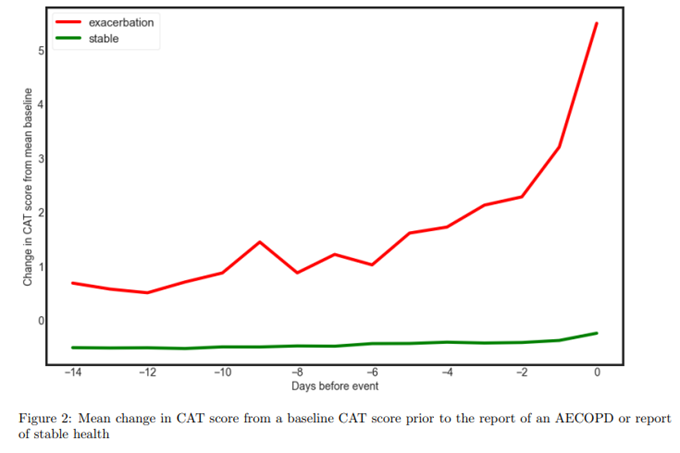Abstract
Background
Acute exacerbations of chronic obstructive pulmonary disease (AECOPD) are associated with high mortality, morbidity and a significant burden on people and healthcare systems. Identifying self-reported data that has predictive capacity for AECOPD may enable timely intervention and improved outcomes.
Methods
This Exploratory Data Analysis uses user-entered data from the myCOPD app (a digital therapeutic) to identify features capable of predicting AECOPD. 1,758 patient app users generated 193,597 records containing 3795 exacerbations. We engineered features based on measures from myCOPD. To establish the relative feature strength, we calculated feature importance using the AdaBoost algorithm and produced time-series analysis visualisations.
Results
Figure 1 is calculated from GINI importance and suggests the change in CAT score from a baseline is the most useful feature for predicting AECOPD.

Figure 2 shows there is a clear difference in the mean change in CAT score before a report of AECOPD vs stable health.

Conclusions
The change in CAT score from a stable baseline could be a powerful predictor of AECOPD.